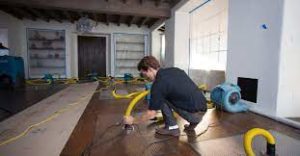Water Damage Restoration Guidelines
Water damage refers to different possible losses incurred by water entering an area where it may allow growth of an organism or other microbial process causing decay of the affected material or system. The most common of these forms is called wet mold or mildew damage. Wet molds are often visible through the development of small wet stains on walls, ceilings, furniture, and carpeting. Mildew, on the other hand, can be virtually undetectable. Both may cause significant problems and therefore it is important to have them remedied and removed in time.Do you want to learn more? Visit Flood Damage Repair Contractor.
 In order for water damage restoration to be successful, it is necessary to follow a few steps. For one, it is important to act promptly when a disaster has occurred so as to prevent further spread of the mold or other organisms causing the damage. Secondly, it is crucial to use certified drying agents such as the MSDA (microbiological and environmental drying Agents) or other approved ones to accelerate drying processes. A drying agent removes any organic residues that could clog the air ventilation system or any other system used to drying materials to prevent moisture from building up.
In order for water damage restoration to be successful, it is necessary to follow a few steps. For one, it is important to act promptly when a disaster has occurred so as to prevent further spread of the mold or other organisms causing the damage. Secondly, it is crucial to use certified drying agents such as the MSDA (microbiological and environmental drying Agents) or other approved ones to accelerate drying processes. A drying agent removes any organic residues that could clog the air ventilation system or any other system used to drying materials to prevent moisture from building up.
After the drying process is complete, the next step involves drying out the affected area using high efficiency radiator and heat equipment to prevent any further moisture build-up. Any furniture, equipment, or other things in the affected area should be properly mopped with running hot water to remove any residual organic residue. It is important for this process to be completed as soon as possible to prevent any further damage from occurring. If these steps are followed then most cases of water damage restoration can be resolved without the need for additional long-term assistance. The insurance company will also often help in determining what needs to be done to fully repair the damage or what portion of the building needs to be torn down. Water damage restoration companies do not always have to be onsite to properly dry and/or remove any remaining organic residues.

